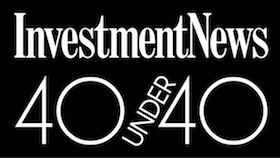 The rising cost of goods and services impacts clients in more ways than just their cash flow. Last week I referenced an inflation graphic published by the New York Times that illustrates the effect of inflation on various spending categories. Rising inflation not only leads to potential changes to spending, it can also leave clients under insured by surprise.
The rising cost of goods and services impacts clients in more ways than just their cash flow. Last week I referenced an inflation graphic published by the New York Times that illustrates the effect of inflation on various spending categories. Rising inflation not only leads to potential changes to spending, it can also leave clients under insured by surprise.
Rising Replacement Costs
According to data published by the BLS, material prices for construction projects (including diesel fuel) have increased a cumulative of 30.2 percent from December 2003 to January 2008. This is more than double the reported increase in the Consumer Price Index (CPI) of 14.5 percent for the same period.
The dramatic increase in material prices has a direct effect on the replacement cost for homeowners insurance policies. Nearly all residential policies require 80% coinsurance coverage of a home’s replacement cost. When the amount of insurance is less than 80% of the home’s replacement cost, the insurer pays the greater of:
- the Actual Cash Value (ACV, subject to depreciation), or
- a prorated payment based on the insurance carried over the required coinsurance amount.
An Under Insured Scenario
With replacement costs up over 30 percent over the last 4 years, homeowners with previously adequate replacement coinsurance may find themselves suddenly under insured. Take for example a home with a replacement cost of $300,000 in December 2003. Replacement coverage of $240,000 was selected at the time the policy was issued with a straight deductible of $500. By January 2008, the replacement cost of the home increases to $390,000, or 30%, due to the rise in construction costs, while the coverage remains unchanged at $240,000.
If the structure suffers a loss of $100,000, what will the insurance company pay for the loss? The new insurance requirement is 80% of the current replacement cost of $390,000, or $312,000. The current insurance coverage, $240,000, is divided by the current required coverage to equal 76.9%. For a loss of $100,000, the insurance company will only pay $76,423, which reflects the subtraction of the insured’s $500 deductible.
If the policy’s replacement coverage was updated to $312,000 (likely for a nominal increase in premium), 100% of the loss would be covered (minus the $500 deductible), protecting the client from an uninsured loss of $23,077.
Identify Clients Subject to Under Insurance
Financial advisers who perform comprehensive analysis including insurance reviews should have access to a client’s most recent homeowners policy. Policies can be scanned and better yet, policy details including liability and replacement coverage can be entered into CRM.
Recent net worth statements should reflect an approximate fair market value for a client’s home, though recent housing market trends may require updates to these values. Nevertheless, the FMV can be used as a guide to what the actual replacement cost might be.
Two columns of data can be exported for quick analysis in a spreadsheet to identify client’s whose replacement coverage ratio is far below 100%.
If the data doesn’t exist or it is very difficult to generate, perhaps it’s an opportunity for advisers to explore options for new practice tools where elegant solutions for analysis like this (and many others) can be supported.




